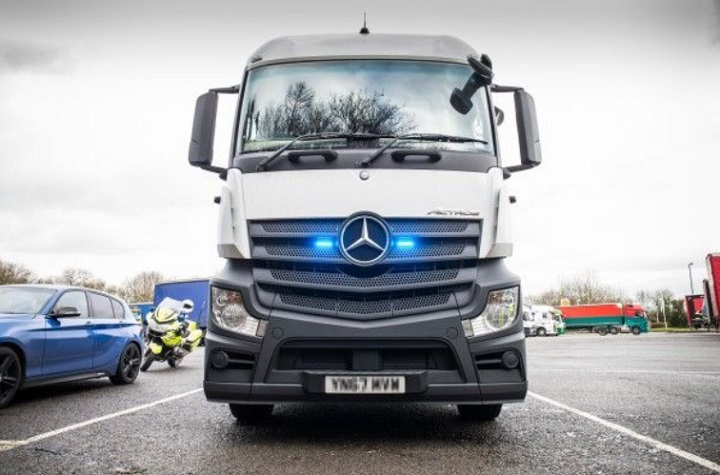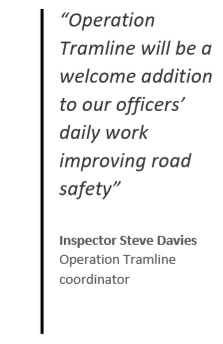
All four police forces in Wales are using an unmarked HGV, provided by Highways England, to catch dangerous drivers on the country’s motorways and main trunk roads.
Under ‘Operation Tramline’, police use the elevated position in the HGV tractor unit to identify and record potentially dangerous driver behaviour, using a hand held video camera.
The operation, a partnership between Highways England and the National Police Chiefs’ Council, was first trialled in south east England for a three-month period in 2014.
In Wales, the pilot is being run in partnership with the GoSafe campaign Operation Snap, which enables road users to report dangerous driving captured through a dashcam.
 The HGV will spend around two weeks in Wales, with the time split between the country’s four police forces.
The HGV will spend around two weeks in Wales, with the time split between the country’s four police forces.
South Wales Police says the elevated position in the HGV tractor unit gives officers a ‘different perspective’ to help detect motoring offences including:
- Dangerous driving in commercial vehicles, including HGVs
- Texting, using mobile devices or streaming while driving
- People not wearing seat belts
- Dangerous or careless driving
Inspector Steve Davies, Operation Tramline coordinator said: “The vast majority of drivers are sensible behind the wheel but some are putting themselves and others at risk, therefore Operation Tramline will be a welcome addition to our officers’ daily work improving road safety across Wales.”
Teresa Ciano, partnership manager for GoSafe said: “Road safety is a priority for the police, highways authorities and GoSafe, and that’s why we’re working collaboratively to tackle and change poor driving behaviour.
“Doing what we can to reduce incidents on our network not only improves safety, it reduces congestion and provides more reliable journeys for the thousands of drivers who use Wales’ motorways and trunk roads each day.”
Nothing new here but something that I welcome being a part time motorcyclist. When I am on a main arterial road with a speed limit of 60 or 70 mph I don’t want other drivers close to me using handsets and their driving being affected by that distraction.
I would like this to be taken further with the possible use CPOs in civilian clothes and close to roundabouts and traffic lights with cameras and to record those offenders that are looking down and/or using mobile phones or other devises whilst driving. This could be a good and judicious use of them and could lead to many offenders actually being caught on camera and subjected to the law.
If the police are now accepting video recordings then this is a good use of them and of available manpower.
M.Worthington, Manchester
0